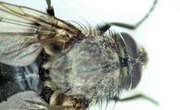
Protozoa, or protists, are single-celled organisms. According to Ohio State University at Mansfield’s Dr. Stephen Abedon, protozoa can perhaps be best defined for what they are not, rather than what they are. Protozoa are not animals, plants, algae, fungi or virus. They are, however, parasitic. As a result, these tiny organisms can cause a variety of diseases in humans, animals and plants. Several varieties of crop plants can suffer from protozoan diseases.
Coffee
Protozoa can cause disease in coffee crops. A 1968 study by H. Vermeulen published in the “European Journal of Plant Pathology” found that phloem necrosis disease in the species Coffea liberica could be caused by the protozoa known as Phytomonas leptovasorum, which is a flagellate protista, or a protozoan that has tail-like appendages that provide motility. Vermeulan’s article states that “the absence of any evidence toward fungi, viruses, nematodes or bacteria” leads to the conclusion that the protozoa Phytomonas leptovasorum causes phloem necrosis disease.
The symptoms of phloem necrosis disease include yellowing, drooping leaves. Advanced infections result in root die-back and can eventually lead to tree fatality. More mature trees appear to be more susceptible to phloem necrosis disease, although younger trees can be infected through root grafts. Though the exact nature of infection is unknown, Vermeulan hypothesizes that insects with a proboscis, also known as hempiteran insects, may serve as a vector for the transmission of Phytomonas leptovasorum.
Coconut Palm
Coconut palm, or Cocos nucifera, crops can suffer from hartroot or heart rot disease, which is believed to be caused by protozoa from the genus Phytomonas. A flagellate protozoa, Phytomonas can cause symptoms both in coconut palms and in weeds growing around coconut palm plantations. This observation led the authors of a 1987 research article in the “Journal of Phytopathology” to suggest that insects may act as vectors for the protozoa. A 1982 study in the journal “Plant Disease” found that the protozoa Phytomonas stahelii was responsible for cases of lethal wilt disease in coconut palm trees in South America. Hartroot and lethal wilt are characterized by symptoms such as root rot, browning leaves, nut fall and plant death.
Oil Palm
Oil palms, also known as Elaeis guineensis or African oil palms, can also be afflicted by the protozoa Phytomonas stahelii. Phytomonas stahelli is believed to be a cause of sudden wilt disease, a fatal syndrome responsible for major economic crop loss amongst South American palm oil growers.. According to a 1977 article in the “International Journal of Pest Management,” no effective or practical control measures exist for diseases that affect roots and stems. Sudden wilt disease can result in symptoms such as rapid foliage desiccation, root and bud rot, nut fall and plant death.
References
- SpringerLink, “European Journal of Plant Pathology”: Investigations into the Cause of the Phloem Necrosis Disease of Coffea Liberica in Surinam, South America
- APS Net, “Plant Disease”: Phytomonas Staheli Associated with Coconut and Oil Palm Diseases in Columbia
- InformaWorld, “International Journal of Pest Management”: Diseases of the Oil Palm
Resources
About the Author
Based in the Southwest, Linsay Evans writes about a range of topics, from parenting to gardening, nutrition to fitness, marketing to travel. Evans holds a Master of Library and Information Science and a Master of Arts in anthropology.
Photo Credits
Jupiterimages/Photos.com/Getty Images
